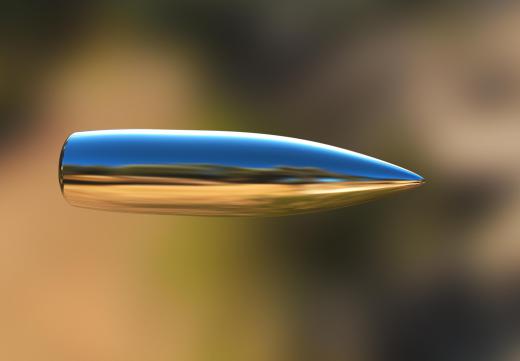What is Antimony?
Antimony is a pure element. Some forms of it are metallic, while others are non-metallic. Antimony is used for a wide array of industrial applications, including many paints, batteries, and rubber. As a result of its wide use in various non-recyclable materials and its toxic properties, antimony is often spoken of in the context of environmental problems or cleanup.
Antimony has an atomic number of 51 and is represented by the symbol Sb, derived from the Latin Stibium, the name given to antimony sulfide in the Classical period. A popular etymology of the word antimony holds that a German monk, Basil Valentine, threw some of the element to the monastery's pigs, who purged and then became very healthy and fattened quickly. The monk decided that the element must have healing properties, so fed it to his fellow brothers, who all subsequently died of toxicity. The name, then, is believed to come from the French antimoine, meaning “anti-monk”. While this etymology is very romantic, it is more likely that the name comes from the Greek anti and monos, meaning simply “not alone”.

Antimony is part of the class of elements known as metalloids, which have properties roughly between those of the metals and the non-metals of the periodic table. Antimony is also what is known as a semimetal, which refers to the way in which it conducts energy – bismuth and arsenic are both semimetals as well. Other metalloids include silicon, germanium, and boron.

Antimony in its stable form is a blue-white metallic element, with an atomic mass of 121.76g/mol. It melts at 1167°F (630°C) and makes a rather effective semiconductor. Although it looks metallic, antimony does not have the same chemical responses as a true metal. Antimony is also often added to lead to make the lead stronger.
Antimony is used in many different contexts in industry, including some medicines, lead-free solders, bullets, batteries, plumbing, and matches. It has been used in a naturally occurring form for thousands of years, primarily as a medicine, as small amounts can kill certain parasites without compromising the health of the recipient. Antimony in a compound form also has impressive flame-retarding properties, and as a result is used to treat such things as seat covers, toys, and children’s clothing.

Antimony, like many of the metalloids, is relatively toxic. Toxic effects are similar to those of arsenic, causing severe vomiting and eventually death. In trace amounts, the body can process antimony rather well, and in small doses, effects are minor – dizziness, vertigo, and headaches. Because of its use in many disposable products, antimony seepage into water sources is a concern in many areas. The Environmental Protection Agency considers it a regulated element under the Safe Drinking Water Act, and the maximum contaminant level is designated as six parts-per-billion.
AS FEATURED ON:
AS FEATURED ON:













Discussion Comments
Hi Dogflower: Yes you are correct and there has been extensive research on this. Science has proven it to be environmental poisoning not a medical cause.
i have read in various reports that antimony is in crib mattresses. anyone else hear about this?
I have a large cone of metal (~8 lbs.) and its labeled Antimony. but im not sure it is how can I see if it is? also what can i do with it, aside from gathering dust?
I reently had a toxic element screen run. Antimony was found to be 0.043mcg/g. Is this something to be concerned about?
What is the association between antimony and Gold?
Post your comments